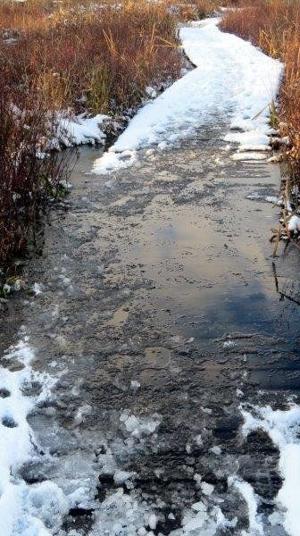Well it turns out 2015 looks a lot like 2014. At least for beavers. There familiar whinging from the UK this morning about the risk of letting the animals vandalize the waterways after 500 years of peace.

Farmers’ fears as beavers make a comeback across the British countryside
Wildlife groups back the return of the aquatic mammals, which manage the landscape by cutting down trees and damming rivers, for the benefit they can provide in preventing flooding, maintaining water quality and boosting other wildlife.
But farmers and anglers have raised concerns that they can damage the landscape and fish migration routes, and conservation efforts should be focused on the UK’s existing wildlife.
Despite the concerns it appears that the beaver, which was hunted to extinction by the 16th century, could once again become a permanent feature of waterways in England, Scotland and Wales, as they have across Europe.
“Much of the rest of Europe lives alongside this species and benefits from them as par-excellence water engineers, helping water quality and in some cases flood alleviation. We think they have a role to play in the modern countryside.”
But National Farmers’ Union countryside adviser Claire Robinson said: “We believe efforts, and finances, would be better focused on retaining current biodiversity.
“We are against the reintroduction of European beavers to the countryside because they could potentially cause long-term economic and physical impacts on the English landscape, including flood risk or, crucially, potential for disease transmission.”
She added that the current legal framework was not robust enough to allow effective management of beavers in the landscape, and warned there were too many issues that needed to be addressed before reintroduction could be considered.
Mark Lloyd, chief executive of the Angling Trust, said Britain’s river systems had changed dramatically since beavers died out, and suffered from endemic pollution, over-abstraction of water and more than 20,000 dams which act as barriers to fish migration.
“Fewer than 25% of England and Wales’ rivers are in good ecological condition and the Angling Trust’s view is that it would be irresponsible even to consider reintroducing this species into the wild without first restoring our rivers to good health by tackling low flows, pollution and removing the vast majority of man-made barriers to fish migration,” he said.
That’s right, first fix ALL our rivers, take out every obstacle and improve each drop of water quality and then we’ll talk about beaver reintroduction. It’s a perfect delay tactic, not only because it will never happen, but also because even if it does happen. once all the rivers are fixed, England won’t NEED beavers and the primary argument for their restoration potential will be moot. In the mean time,beavers could spread disease! Let’s worry about that!
(And kill cows.)
Last night was the seventh (?) annual Worth A Dam Ravioli feed, and the guests were cheerful, determined and triumphant. Jon’s hardworking chef techniques kept everyone amazed and we welcomed some new faces to our stalwart regulars. Riley said that the waterboard talk had been game changing, and she wanted to work to arrange one for Fish and Game. (!) FRO boldly accepted the canvas to prepare for this years art project, and Cheryl made amazing wildlife cards from her photos that should become our marketing idea this year. Deidre talked about arranging another guided train tour to the festival, and we mulled the idea of even coming from another direction. After it was all over. I heard from one guest the very best rumor that I have heard in the history of beavers, but I’ll keep it to myself until it substantiates.
Lets just say that the evening was a grand success.







 Not long ago, I was set for a nice long hike in a nearby park to work off stresses. I had my binoculars, camera, and a little snack to enjoy along the way.
Not long ago, I was set for a nice long hike in a nearby park to work off stresses. I had my binoculars, camera, and a little snack to enjoy along the way.









































